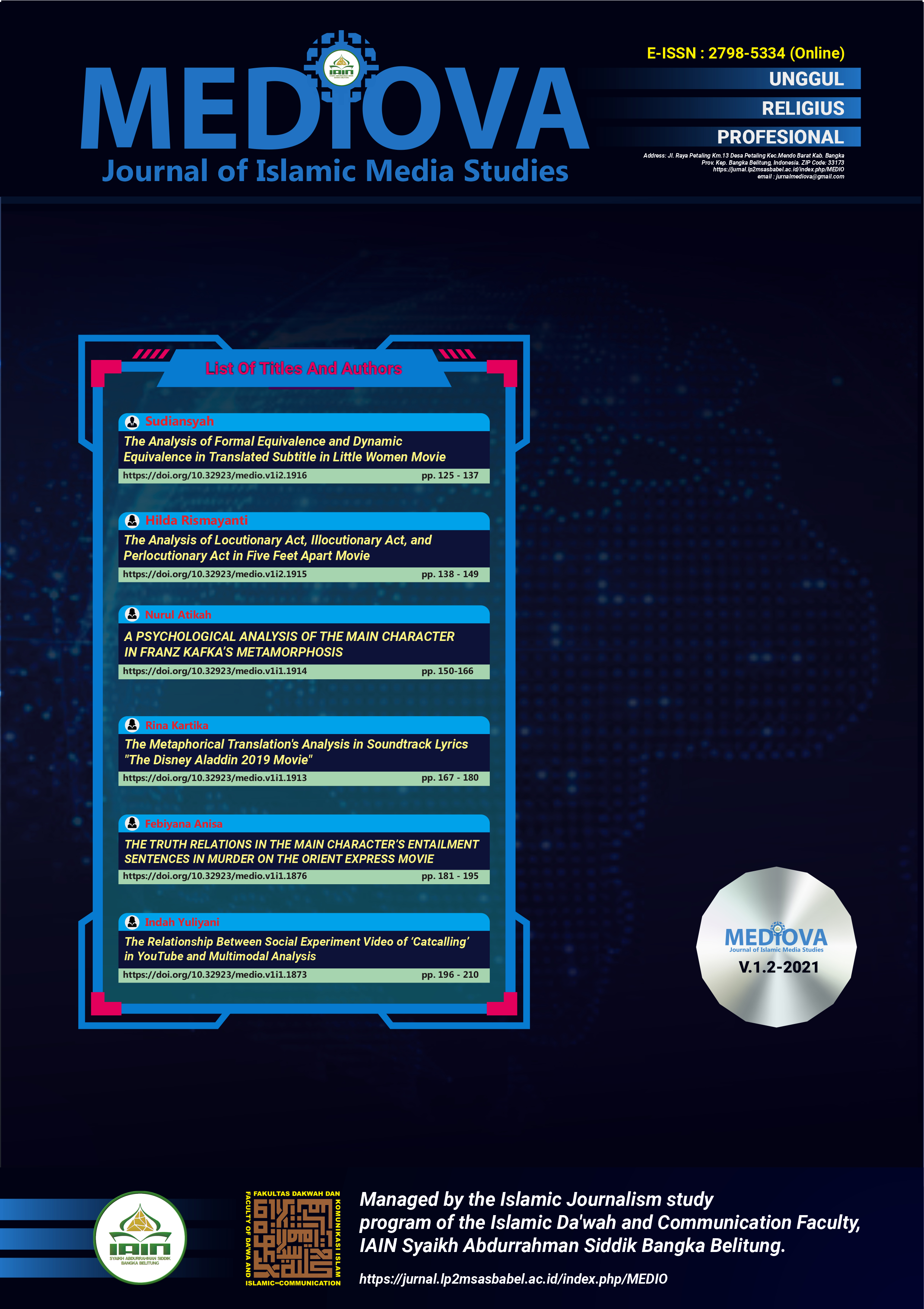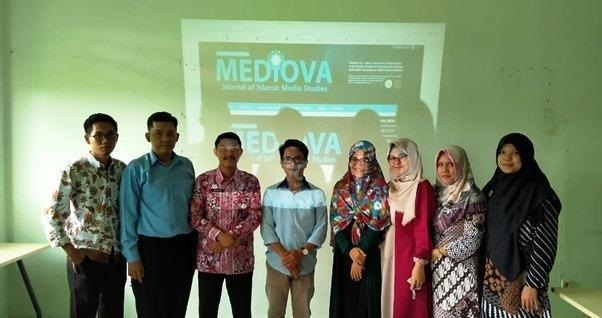The Relationship Between Social Experiment Video of ‘Catcalling’ in YouTube and Multimodal Analysis
Indah Yuliyani, Herland Franley Manalu, Dini Wulansari
Abstract
The existence of language in society helped us minimize misunderstanding on the interpretation of meaning as humans. The different style of language makes human understand the meaning in different ways. A multimodal anlaysis described the language from various viewpoints because the relations in multimodal aspects symmetrically form a meaning. This study showed the social problem that occurs in society is called catcalling. Catcalling is a form of sexual harassment described as giving verbal or nonverbal sexual attention by strangers on the street or in public places. This study analyzed catcalling on social experiment video in YouTube Channel by Rob Bliss using multimodal analysis. This study focused on how the semiotic systems interpret the catcalling meaning in the social experiment video and explain how catcalling is considered as sexual harassment in multimodal viewpoints. This study used descriptive quantitative as a research method. The data will be processed through ELAN (EUDICO Linguistic Annotator) Version 5.9. This study found the verbal and nonverbal language in the social experiment video. Meanwhile, multimodal analysis by Michele Anstey and Geoff Bull demonstrated three semiotic systems contained in the social experiment video: 1) Linguistic, 2) Visual, and 3) Gestural. The theory explains that multimodal can be used as an analysis media focused on text, images, and video analysis. This study tries to provide an explanation for the understanding of meaning extensively with the existence of more than one semiotic system found in the social experiment video. Following this study, catcalling can be seen from various existing viewpoints, not only by women but also by men as the perpetrators of catcalling.
Downloads
Copyright Assignment
As an author of Journal Mediova of the Islamic Journalism study program of the Islamic Da'wah and Communication Faculty, IAIN Syaikh Abdurrahman Siddik Bangka Belitung, I, who sign below:
Declare:
- My paper is authentic; my own writing and it has not been published/proposed on any other journals and publication.
- My paper is not plagiarism but my original idea/research.
- My paper is not written by other help, except with Board of Editors and Reviewers recommendation who have been chosen by this journal.
- In my paper, there are no other writings or opinions except referred in bibliography and relevant with the rule of writing in this journal.
- I will do this assignment for sure. If there are irregularities and untruths in this assignment, I will be responsible later according to the applicable law.
- Authors retain copyright and grant the journal right of first publication with the work simultaneously licensed under a Creative Commons Attribution 4.0 International License that allows others to share the work with an acknowledgment of the work's authorship and initial publication in this journal.
- Authors are able to enter into separate, additional contractual arrangements for the non-exclusive distribution of the journal's published version of the work (e.g., post it to an institutional repository or publish it in a book), with an acknowledgment of its initial publication in this journal.
- Authors are permitted and encouraged to post their work online (e.g., in institutional repositories or on their website) prior to and during the submission process, as it can lead to productive exchanges, as well as earlier and greater citation of published work (See The Effect of Open Access).








.png)









